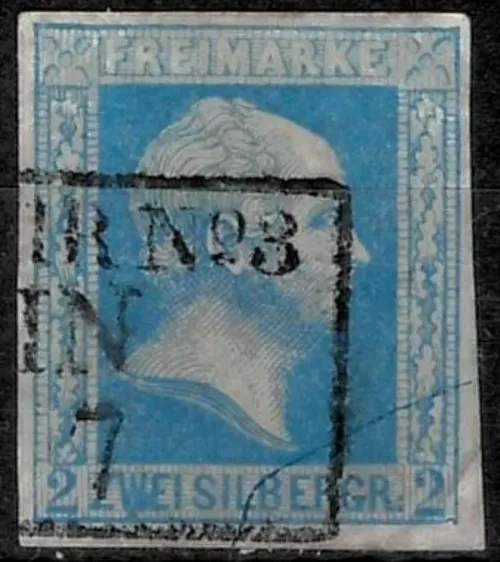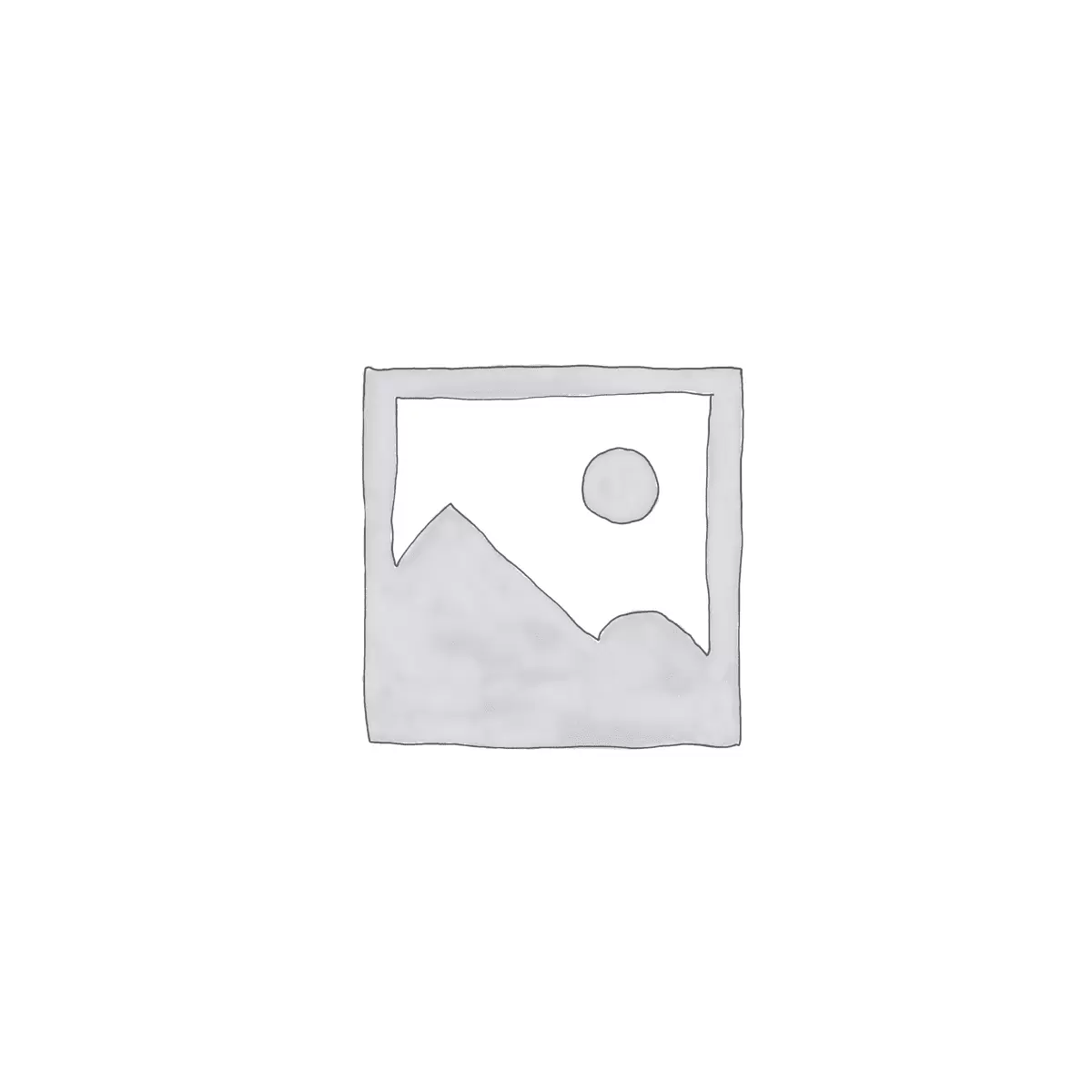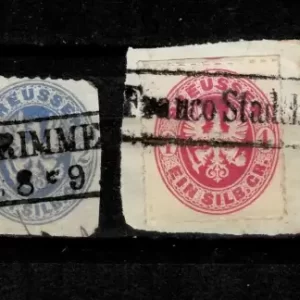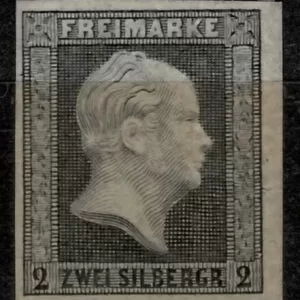Showing all 5 resultsSorted by latest
Showing all 5 resultsSorted by latest
Prussia (Preußen), one of the German states, issued its own postage stamps between 1850 and 1867, before joining the North German Confederation. Here’s an overview of its stamp history:
First Prussian Stamps (1850)
- Prussia issued its first postage stamp on November 15, 1850.
- The first series included denominations of ⅓, 1, 2, and 3 Silbergroschen.
- Design: The stamps featured a simple numeral in the center, enclosed by a rectangular frame, with “Freimarke” (postage stamp) and “Preussen” inscribed.
- The stamps were printed using letterpress printing and were without perforations (imperforate).
Later Issues (1856-1867)
- 1856: A new series with a portrait of King Frederick William IV replaced the numeral design.
- 1861: A new series was issued with a portrait of King Wilhelm I, featuring denominations from ½ to 30 Silbergroschen.
- 1866-1867: The last Prussian stamps were issued before postal unification.
End of Prussian Stamps (1867)
- In 1867, Prussia joined the North German Postal District, and Prussian stamps were replaced by those of the North German Confederation.
Key Features of Prussian Stamps
- No perforations on early issues (imperforate).
- Used Silbergroschen and Thaler as currency denominations.
- Designs included simple numerals and royal portraits.
- Stamps were valid in other German states using the same postal system.





